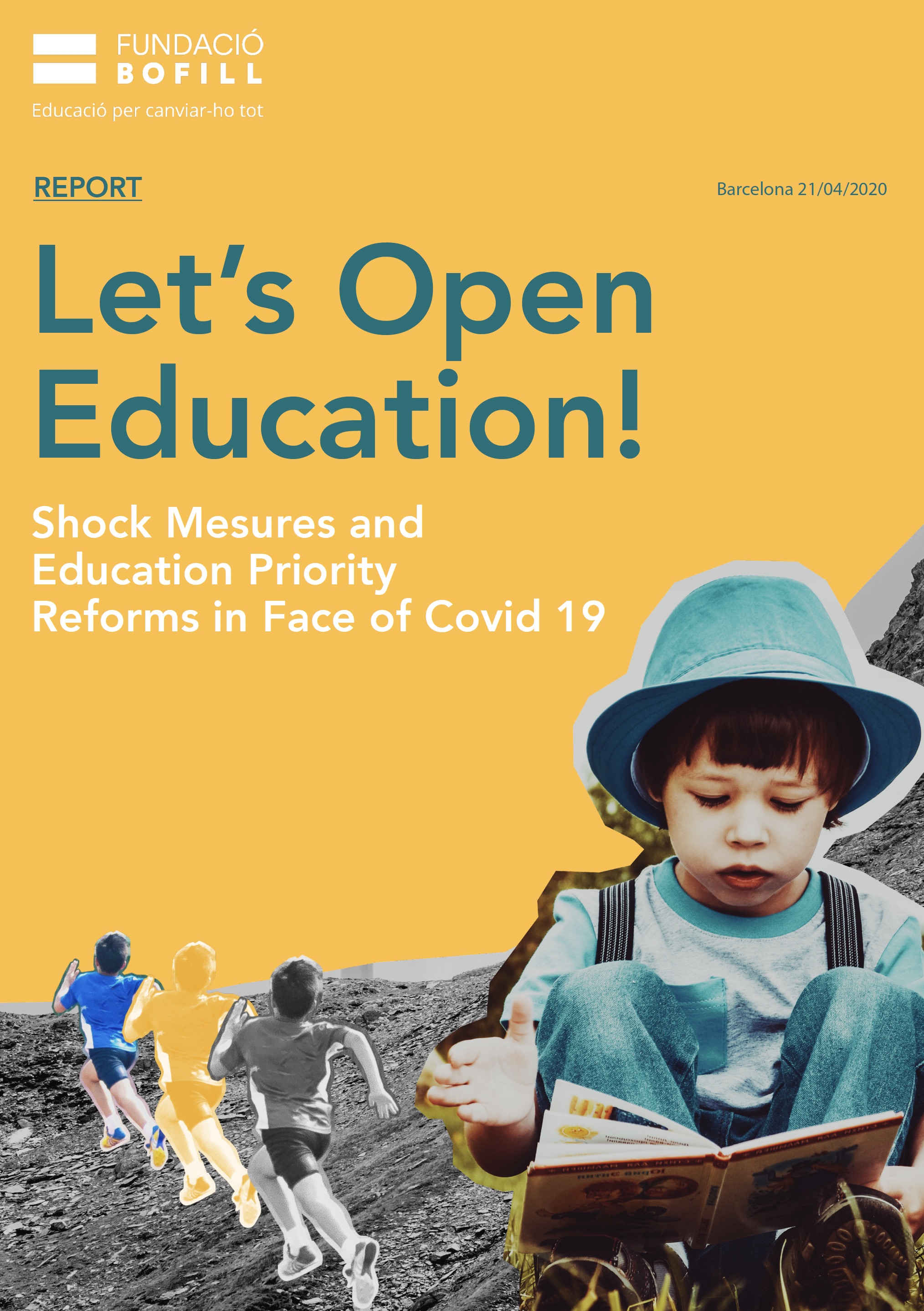
Let's Open Education!
- Date 21/04/2020
The outbreak and spread of the coronavirus in our society is having a series of negative consequences that we are experiencing at present and that will continue to have direct and indirect impacts in the future. Negative consequences in the field of healthcare (infection and death rate due to COVID-19 and physical and mental illnesses and disorders associated with the lockdown period), in the economy and employment (unemployment, lack of work in the short or long term, loss of income, not being paid, poverty affecting housing and energy supplies), in the social sphere (caused by social isolation measures) and also in education.
In the field of education, the coronavirus crisis forced schools to close on 13 March. The last term of the 2019-2020 school year will be completed via remote teaching and it is very probable that children and young people will not step back into classrooms until the start of the 2020-2021 school year. Added together with the summer holidays, this means six months without school.
This fact alone is a major risk for education and its role in creating equal opportunities, with consequences that are being observed in the immediate term and which, if not remedied, will have lasting effects over the coming years. Indeed, absence from classrooms accentuates various social and educational divides.
We are seeing the large digital divide between different families being accentuated. It can be split into two distinct levels: 1) "Objective" inequality, with regards to the availability of computers and connectivity; 2) "Subjective" inequality, in the possibility of enjoying an environment orientated towards how to use these technologies and resources effectively and independently. These inequalities clearly correspond to the socio-economic and cultural status of families.
In terms of education centres, not all of them are in the same situation and not all of them have the same capacity when it comes to meeting the new teaching and supervision challenges imposed when the schools closed, nor the hurdles when it comes to recovery and the resilience that will be required in embarking on the 2020-2021 school year.
However, the education crisis brought about by coronavirus does not boil down to the negative consequences of missed classes alone. We are talking here about a period of school separation experienced at a critical time for families, in which many will have suffered financial, employment and health difficulties. For children and teenagers, the lack of routine in their learning will very probably be added to by situations of stress, anxiety and frustration. Moreover, it is to be expected that this critical context and situation will drag on once the immediate health alarm has passed.
In summary, the outlook for the coronavirus crisis on education and its role in terms of creating equity and equal opportunities is extremely worrying.
This is why we need to act and to do so through a more courageous and committed educational policy than ever before. In its approach, this policy should combine short-term measures aimed at containing the shock of the crisis, looking to the medium and long term to design the scaffolding of what the recovery of education over the coming years will need to look like.
This document proposes a set of measures in two action plans. In the first block, we list 10 packages of "shock measures" aimed at containing the unequalising consequences of missed classes and the summer holidays. There are a total of 30 measures arranged according to three periods and application goals: a) end of the 2019-2020 school year; b) summer period; c) start and continuation of the 2020-2021 school year.
The second block poses a set of challenges and reforms explaining the current risks and degree of urgency, which we believe is essential to tackle at the same time as the more immediate shock measures. These 10 priority reform areas (20 measures) should be firmly established from the start of the 2020-2021 school year in order to turn the next three-year period into a time of genuine momentum and equity in education.
Our aim is to use this set of proposals and measures to spark an open and informed public debate about the content of this document, its suitability and its feasibility. A debate that is already urgent and must start to reach compromises and cement the educational policy responses we need now and for the future.
Related content
Publications, videos, events and posts